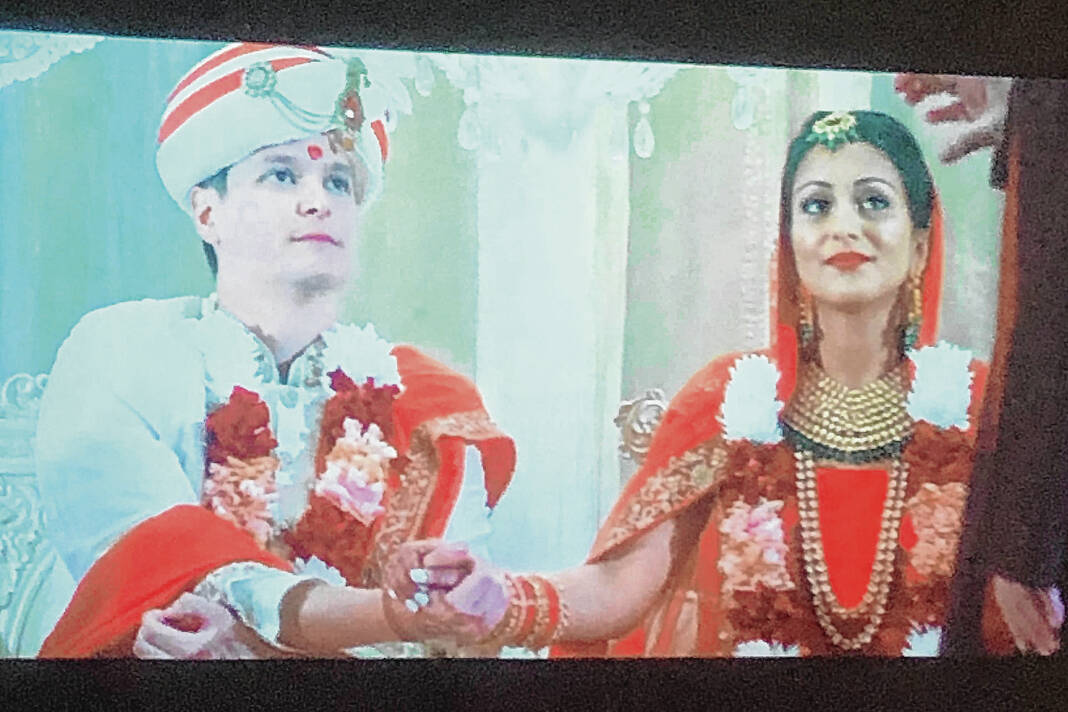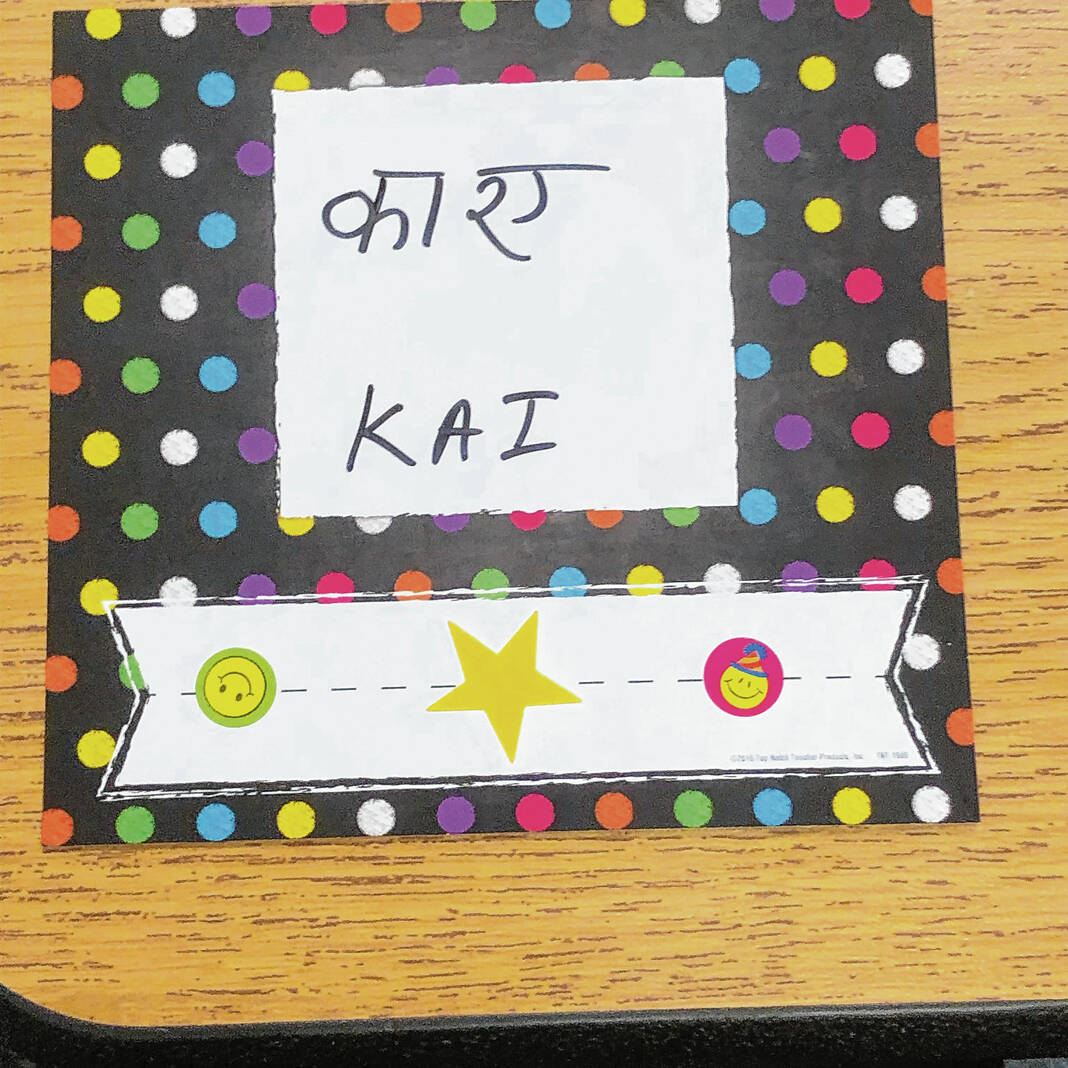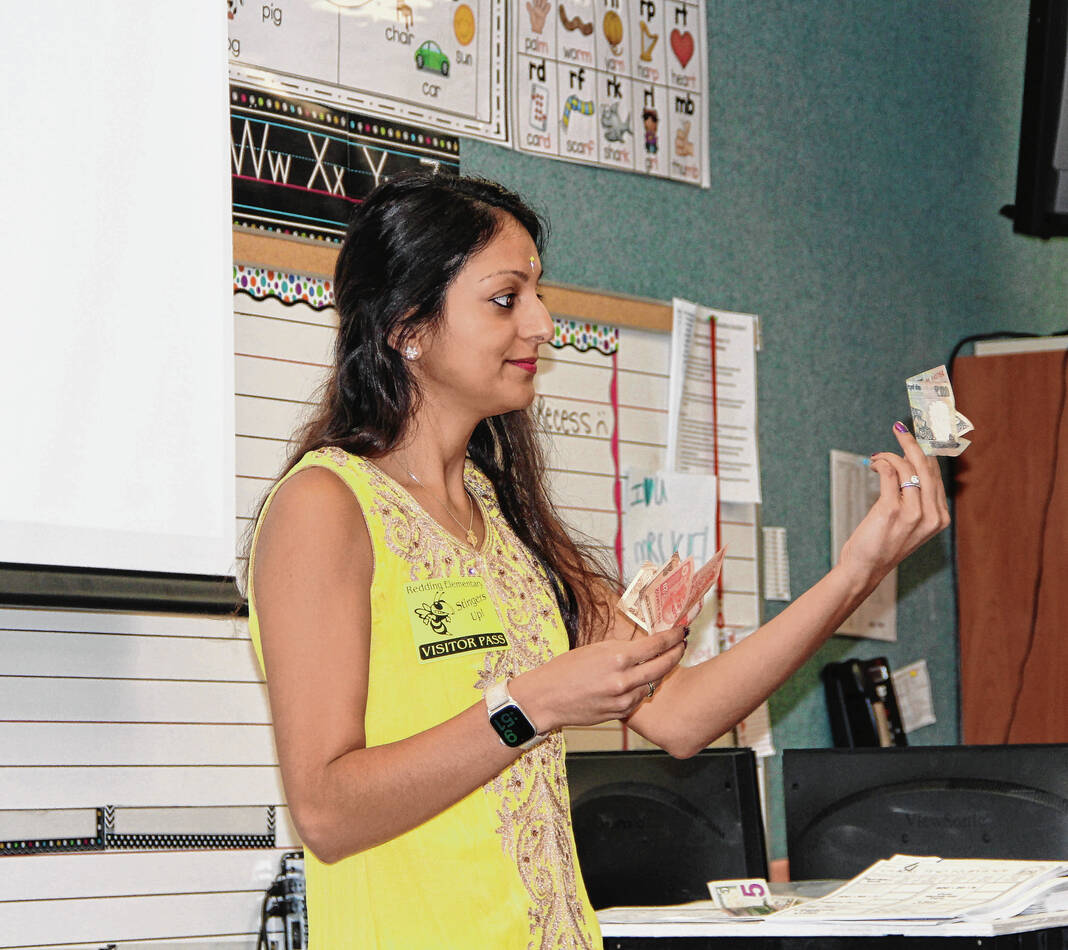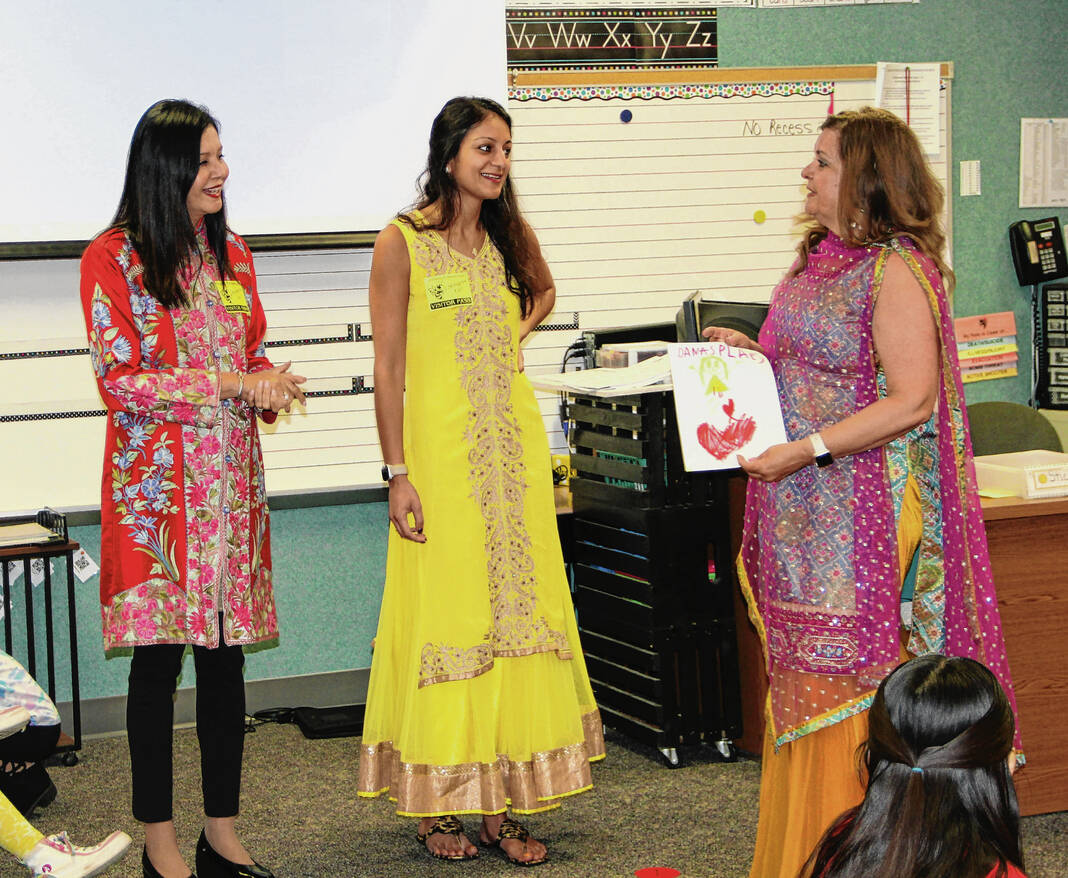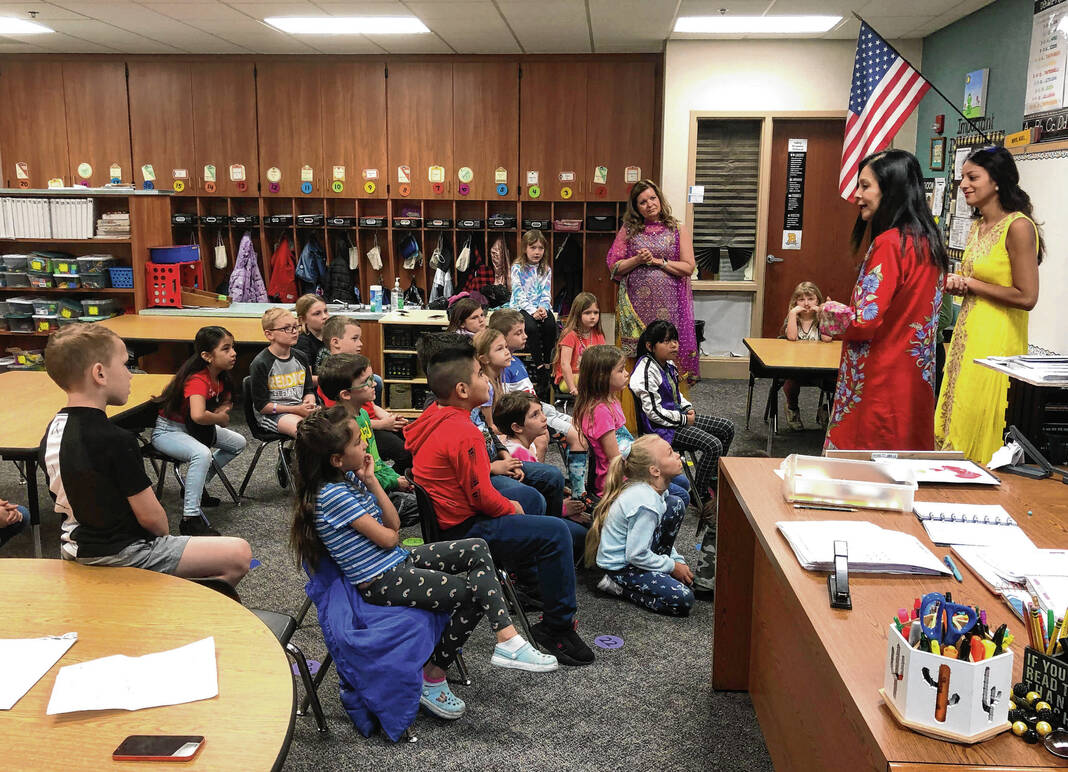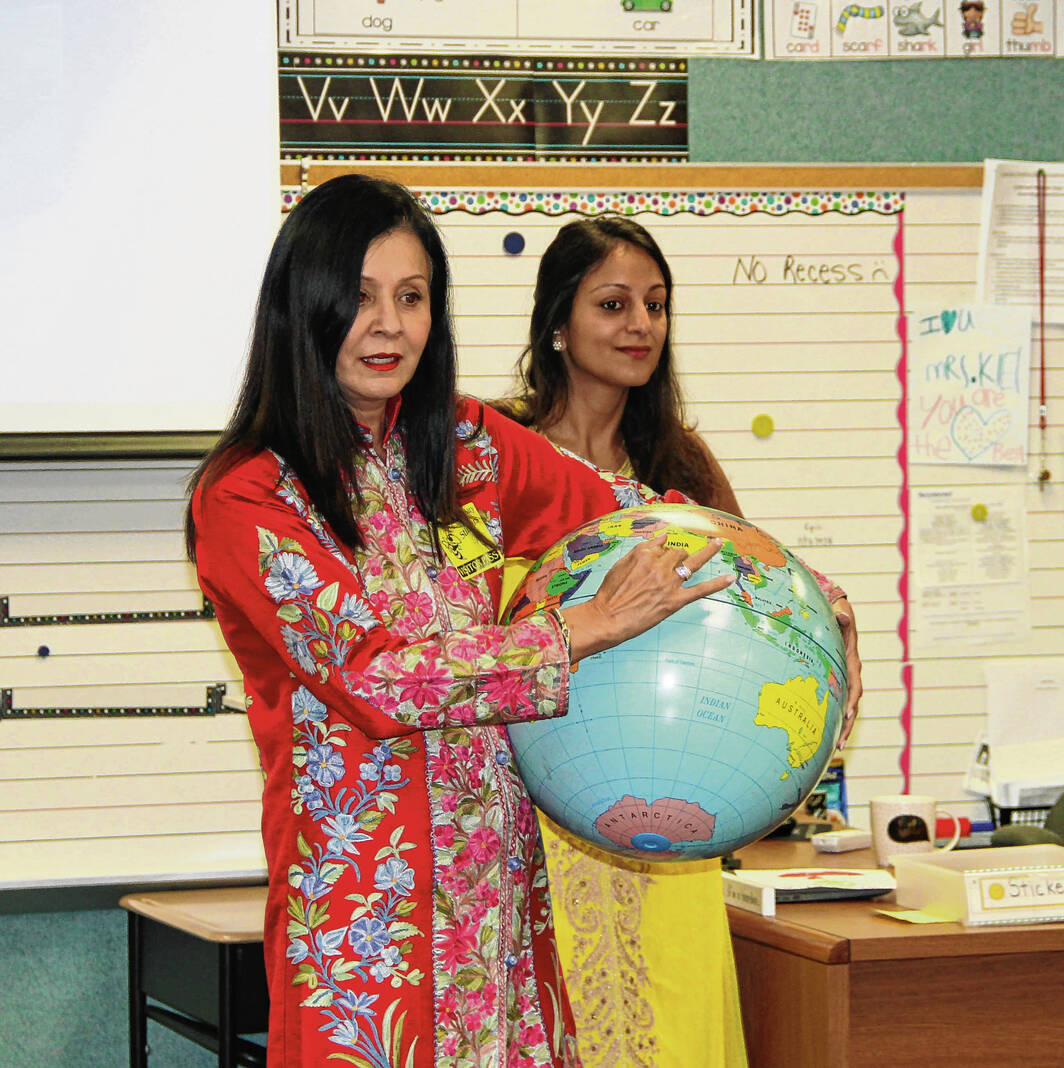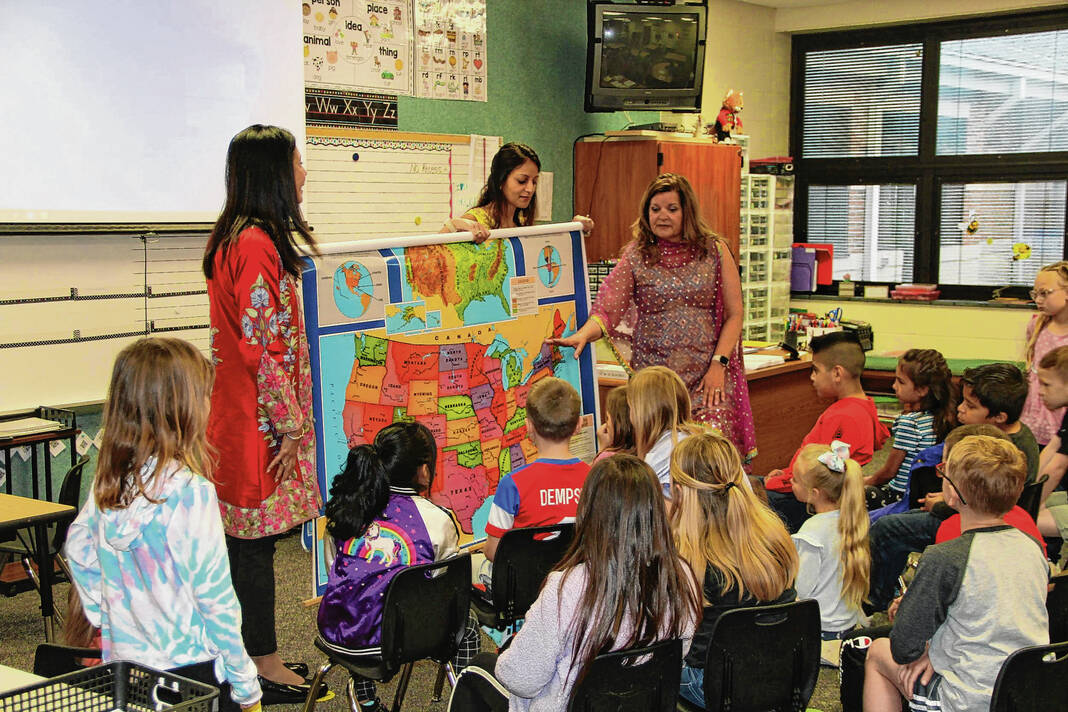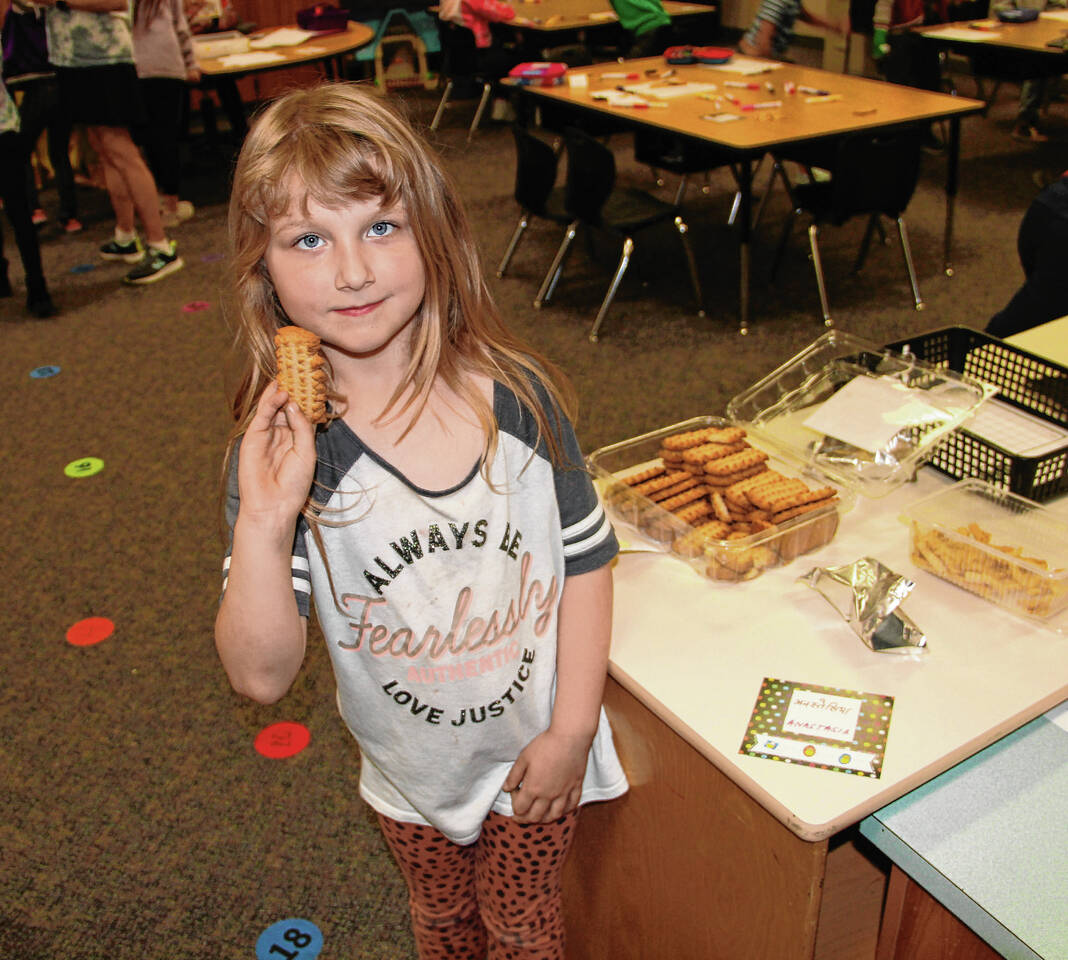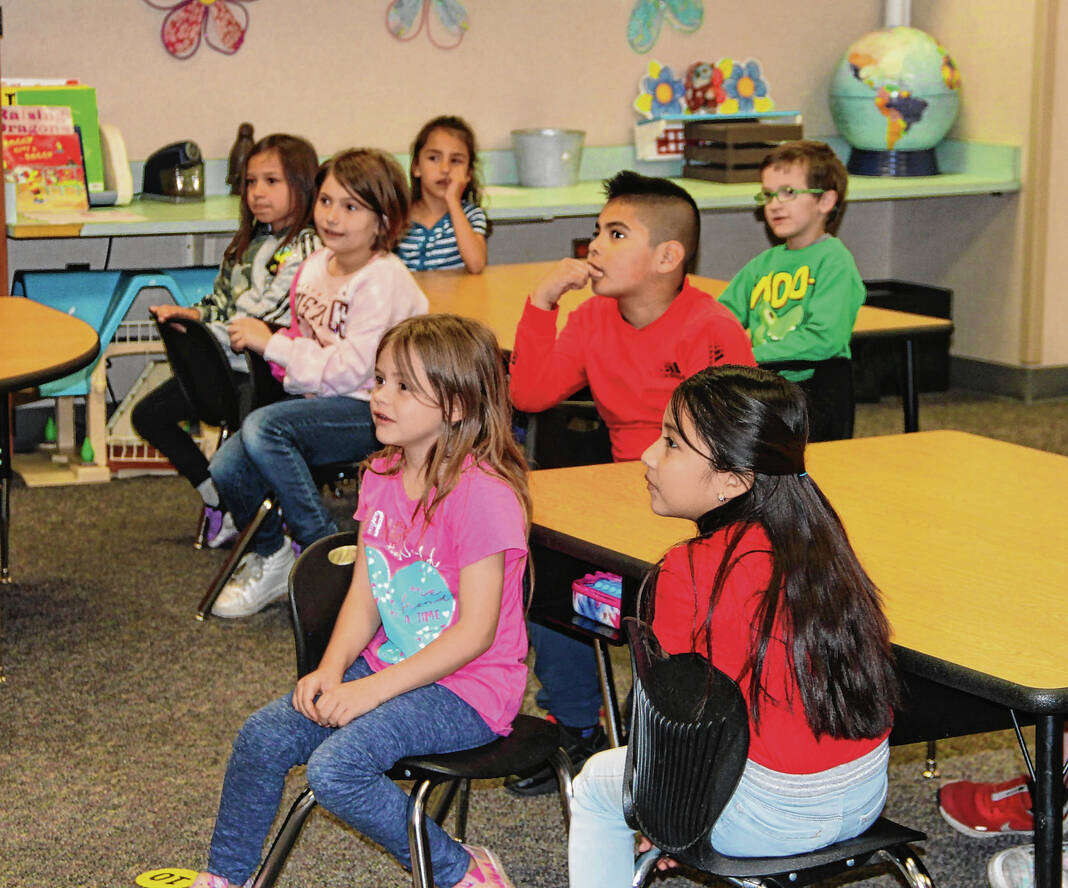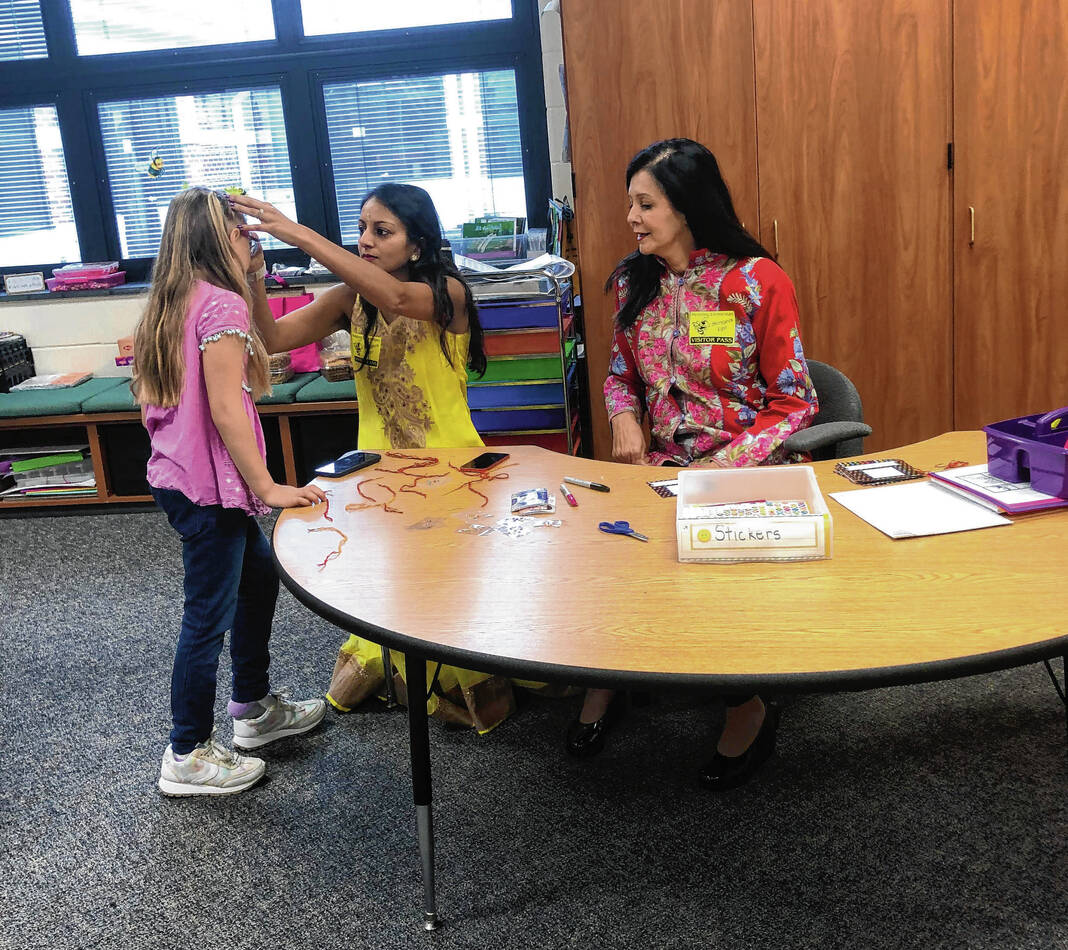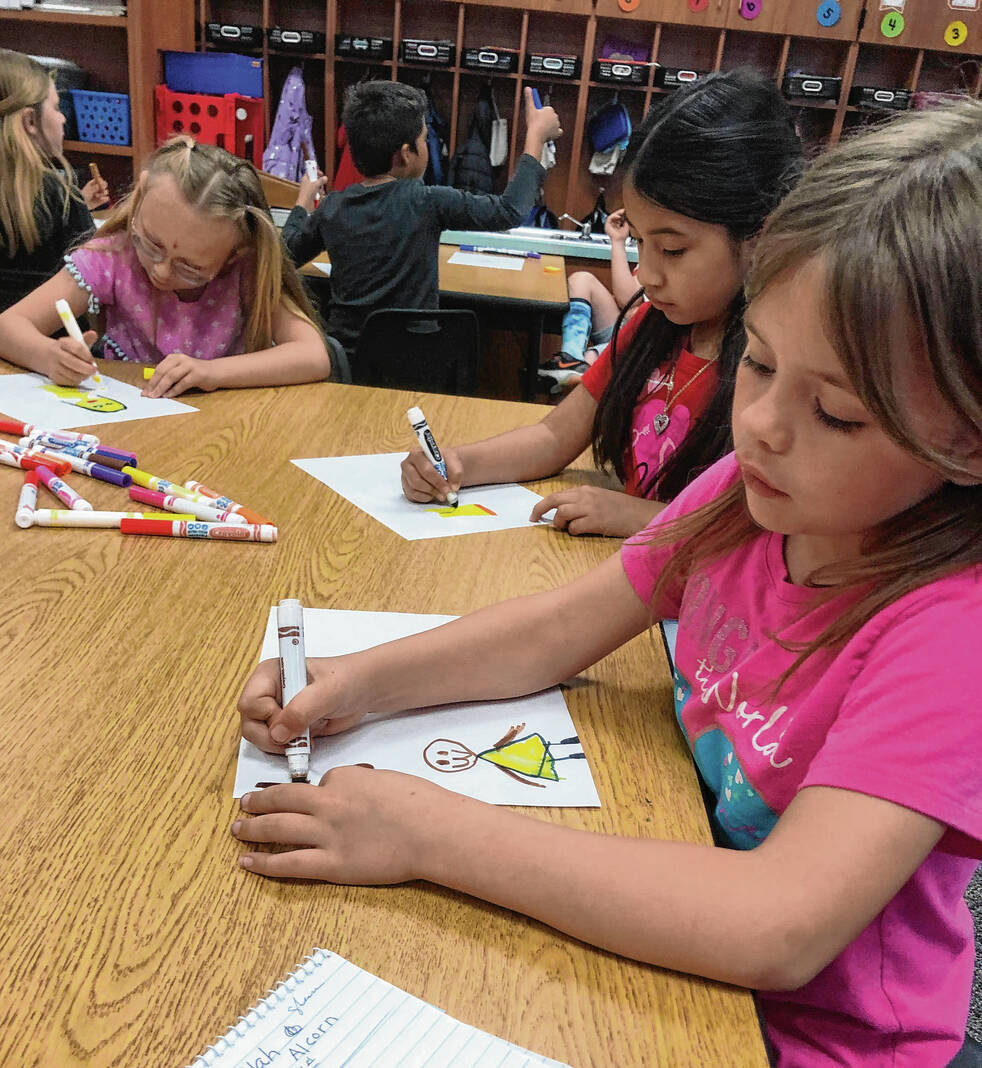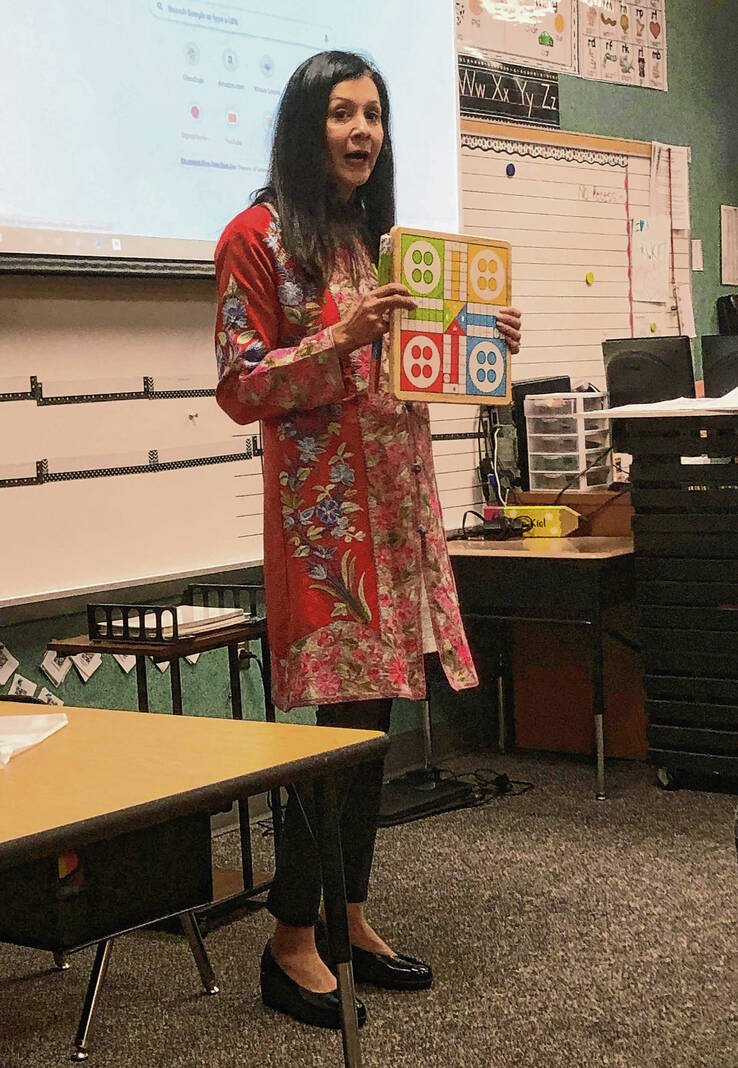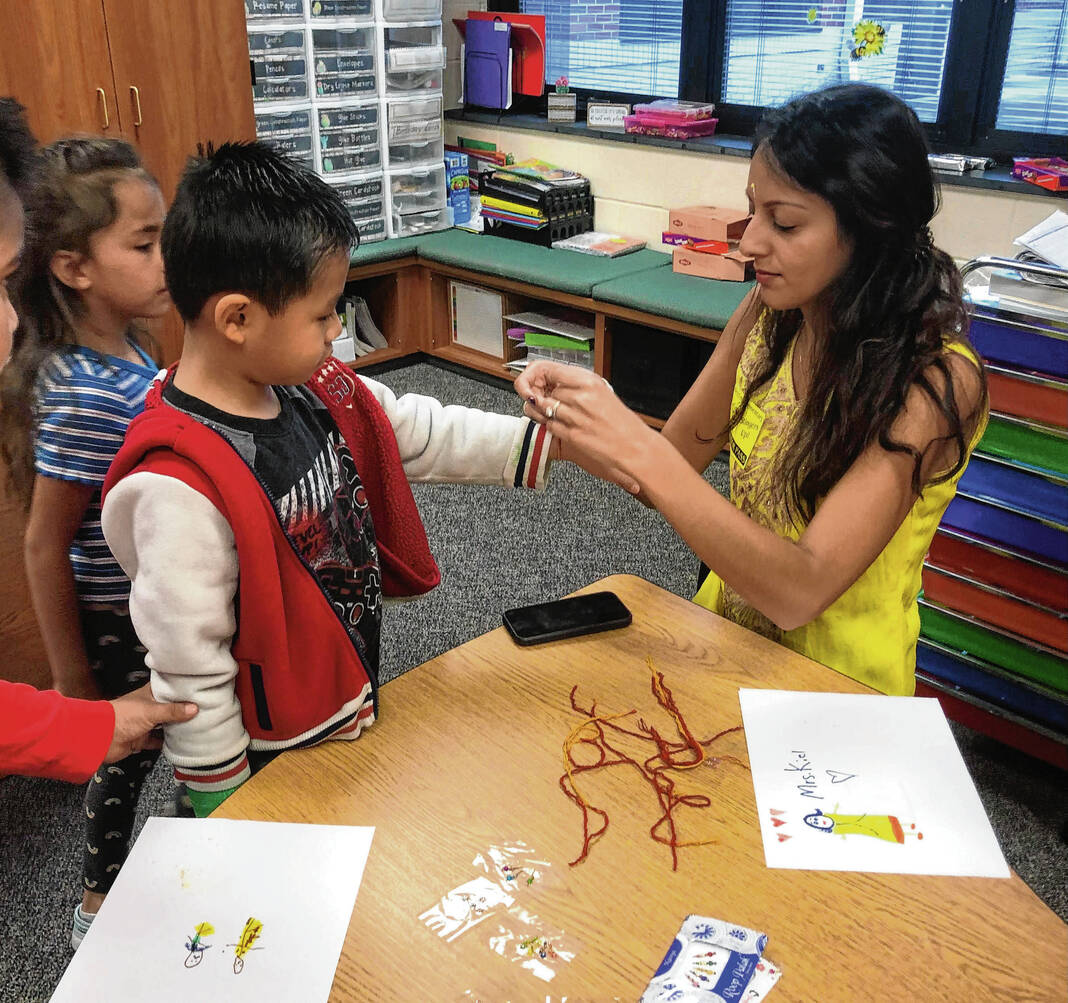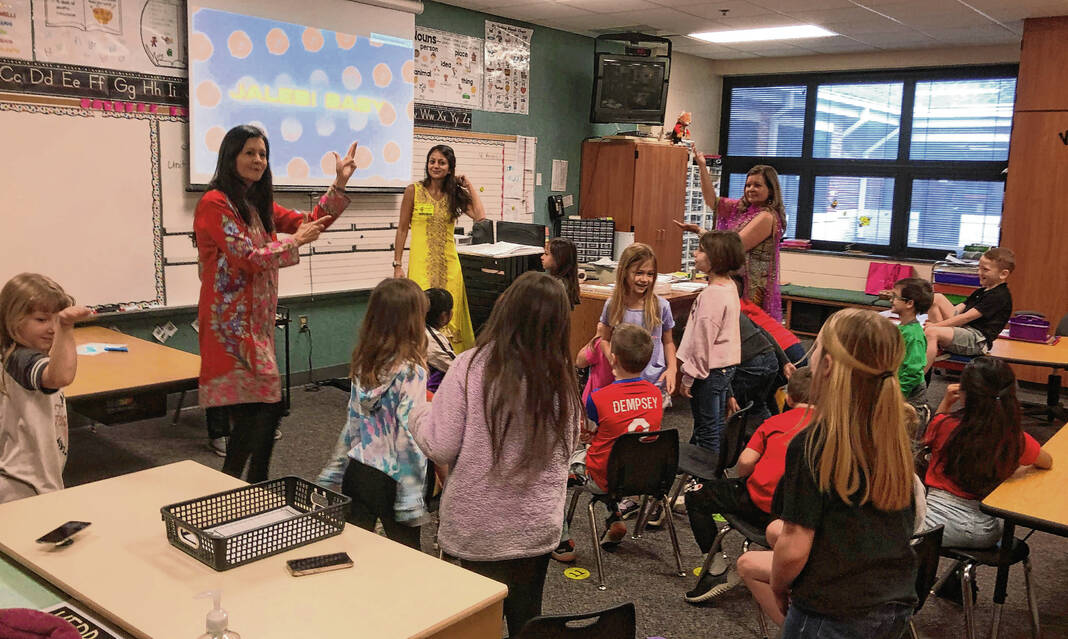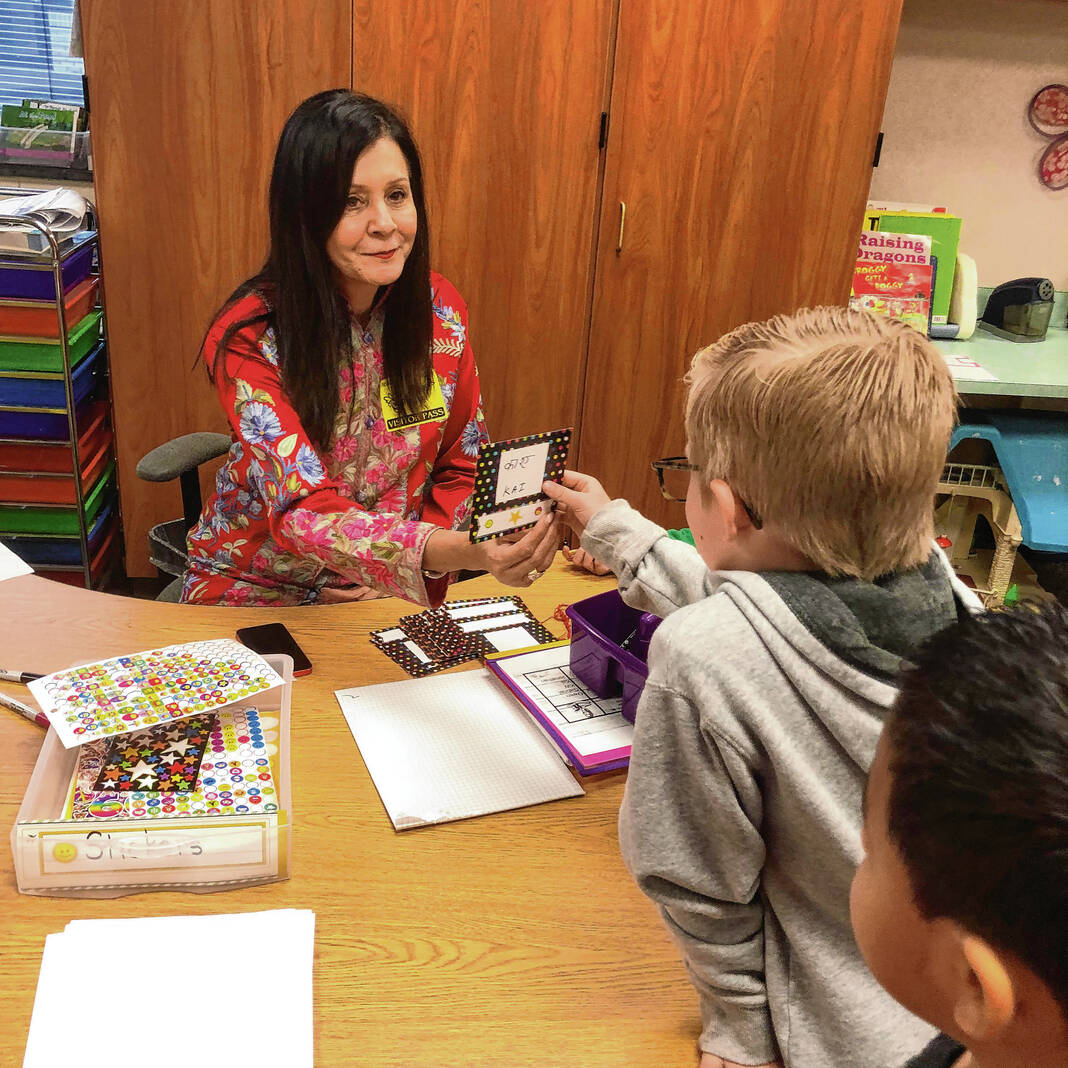Janet Kiel’s first grade class at Seymour-Redding Elementary School had the opportunity to learn about another culture this past Friday when they had two special guests visit in full Indian attire.
Kiel introduced Tonya Bhatia Kiel, who is married to her son, Reggie Kiel, and Tonya’s mother, Bindu Bhatia.
Kiel’s students introduced themselves, and one of them, Jayleigh Oliver, had drawn a picture of a girl dressed in a yellow dress similar to Tonya’s, drawn a heart and had written a request for them to “Dance, please.”
Tonya was born in Arizona, while her mother was born in New Delhi, the capital of India. She moved to the United States about 38 years ago and now lives in Naples, Florida.
Bhatia picked up a world globe and showed the class where they were in the United States and then showed them how far they would have to travel to get to India.
“From here, you would go all the way across the ocean through Europe, then we cross the Arabian Sea and the Indian Ocean and then to India,” she said. “It takes 26 hours to get there, so a little more than a whole day to get there. So you’d go to Indianapolis, fly for about eight hours, then you’d change planes for another nine hours.”
Bhatia said even though that’s about 17 hours, the time change makes it longer.
”Right now, it’s 9:17 a.m. in Seymour, but it’s about 7 p.m. in the evening in India and they are having dinner, where here, we just had breakfast,” she said.
Bhatia then led the class in some guessing games, asking them how many states are in the United States.
Some guesses were five, six, 17 and 50. Then Janet Kiel brought out a map of the United States to show the students, and they tried to guess how many states India has, to which the answer is 28.
Tonya asked the class if they all knew what a language was and to raise their hand if they spoke another language besides English. A few students, who also speak Spanish, raised their hands.
Bhatia then asked the class to give some guesses as to how many languages they thought were spoken in India.
“The main language spoken in India is Hindu, just like most people in the U.S. speak English, but India has 28 states,” she said. “Which state you live in determines which language you speak, but everyone speaks Hindu.”
Bhatia said in India, there are people who speak more than 100 other languages, so it’s a very interesting country because of the different languages and different ways to dress.
Tanya and her mother then sang an Indian bedtime song in Bhatia’s native language. The song talked about looking at the moon and how it’s so far away.
Janet Kiel then showed a video from Tonya and Reggie’s wedding from June 2021 that captured the couple in both American and Indian wedding clothes and showed them all dancing at the reception.
“The wedding was in Atlanta, Georgia, at a very beautiful hotel,” she said.
Tonya said an Indian wedding can last anywhere from three to five days.
Bhatia told the students she was going to show them a trick, so if anyone asked them if they could dance to Indian music, they could say yes.
“You know in your homes you have a light bulb and how your mom and dad turn the light bulb when they change it, that’s one of the movements,” she said. “Then you make a circle with your hand like you’re petting a dog, and that’s the other part.”
The class then listened to some Indian music and practiced their new dance moves.
Bhatia then asked the class what some of their favorite board games were and received answers of Monopoly, Twister, Sorry, checkers, chess and others.
She then held up two Indian board games to show the class. One was called Ludo, a game Bhatia said she grew up playing a lot, and the other game was called Snakes and Ladders.
“I’m going to leave these with Mrs. Kiel and maybe there will be some times when you guys can play the board games,” Bhatia said.
Ludo is a strategy board game in which the players race their four tokens from start to finish according to the rolls of a single dice. Snakes and Ladders is played on a game board with numbered, gridded squares, and the object of the game is to navigate one’s game piece, according to rolls of the dices, from the start (bottom square) to the finish (top square), helped by climbing ladders but hindered by falling down snakes.
Bhatia then said in India, girls, moms and women wear a bindi, a colored dot or sometimes a sticker worn on the center of the forehead.
“It can match the color of your dress, you can wear it every day, you can wear it when you go to a wedding and it’s just something fun that we do,” she said. “We’ve brought some for all of the girls, and for the boys, we brought red thread bracelets for good luck.”
Tonya then talked to the kids about how money is used to buy things when they go shopping and how in the United States they use dollar bills, but in India, the official currency is called the rupee. She held up some different colors of rupees and let the students look at it and pass it around.
The students learned about Indian celebrations Holi, the Festival of Colors, and Diwali, the Festival of Lights, and they also learned that the Taj Mahal in India is one of the wonders of the world.
Students went up one by one to a table where Bhatia was writing each of their names in both English and Hindi on a card they could take with them. Then the class enjoyed some Indian cookies and other snacks.
Oliver said she wanted to see the two Indian ladies dance because she thought it would be pretty cool.
Micaela Miguel Francisco said, “My favorite part of today is seeing the ladies dance, and if I could have an Indian dress, it would be yellow.”
Hearing about the Indian board games was interesting to Kai Pierson. He said his favorite games to play are checkers and Guess Who.
Emily Ely was enjoying the special program and said she liked the cookies, but even better, she liked meeting the two ladies who had come in to teach them about India.

